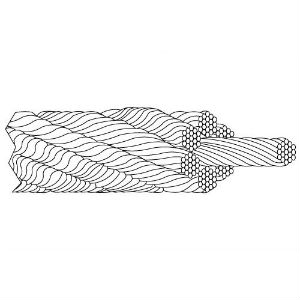 The basics of wire-rope stretch, according to Bergen Cable’s experts
The basics of wire-rope stretch, according to Bergen Cable’s experts
February 3, 2020 REDWIRE is news you can use from leading suppliers. Powered by FRASERS.
Posted by Bergen Cable Technology, Inc
Mfr Mechanical Cable, Cable Assemblies & Push-Pull Controls. Original Mfr Of Safety Cable, A Patented Fastener Reten... Read more
Subscribe
Free REDWIRE e-newsletter

Bergen Cable offers ways to calculate wire-rope stretch.
Bergen Cable keeps a loyal customer base not just because of great products, but also due to its expertise. The company’s website offers ample information, including the Cable 101 page. This page has a section on wire-rope stretch, a major trait to consider when selecting wire rope for any application.
It is also essential to consider wire-rope stretch when inspecting rope that workers are using. Occupational health and safety standards typically recommend checking the stretch regularly when wire rope is carrying a load.
The two main factors
Many use the term “wire rope” as a synonym for “cable”. But it really means rope with diameters higher than 3/8 of an inch. Bergen Cable identifies two main factors that affect wire-rope stretch – structural and elastic stretch. Elastic stretch is caused by elongation of the wires, whereas structural stretch is caused by a mix of lengthening the rope lay, compression of the core, and adjustment of the wires and strands to the load that the rope holds.
Structural stretch is affected by many variables – the core size, the length of the lays, the wire rope’s construction, and the loads and amount of bending that workers impose on the wire rope. To estimate the quantitative value of a wire rope’s structural stretch, one multiplies the length of the rope by 0.005 when it is carrying a medium-weight load – and by 0.01 for a heavy load, or 0.0025 for a light load.
Elastic wire-rope stretch is proportional to load weight and rope length when it holds a load under the rope’s elastic limit. The elastic limit of galvanized wire rope tends to be about half of its breaking strength, or roughly 60 per cent in the case of stainless steel rope. Elastic stretch is inversely proportional to the wire rope’s metallic area and modulus of elasticity. One can calculate the elastic stretch in feet by multiplying the load weight in pounds by the rope length in feet, then dividing the answer by the metallic area in square inches multiplied by the modulus.
Trust Bergen Cable for top wire-rope expertise.
To learn more, contact Bergen.
Share
Posted by Bergen Cable Technology, Inc
Mfr Mechanical Cable, Cable Assemblies & Push-Pull Controls. Original Mfr Of Safety Cable, A Patented Fastener Reten... Read more
